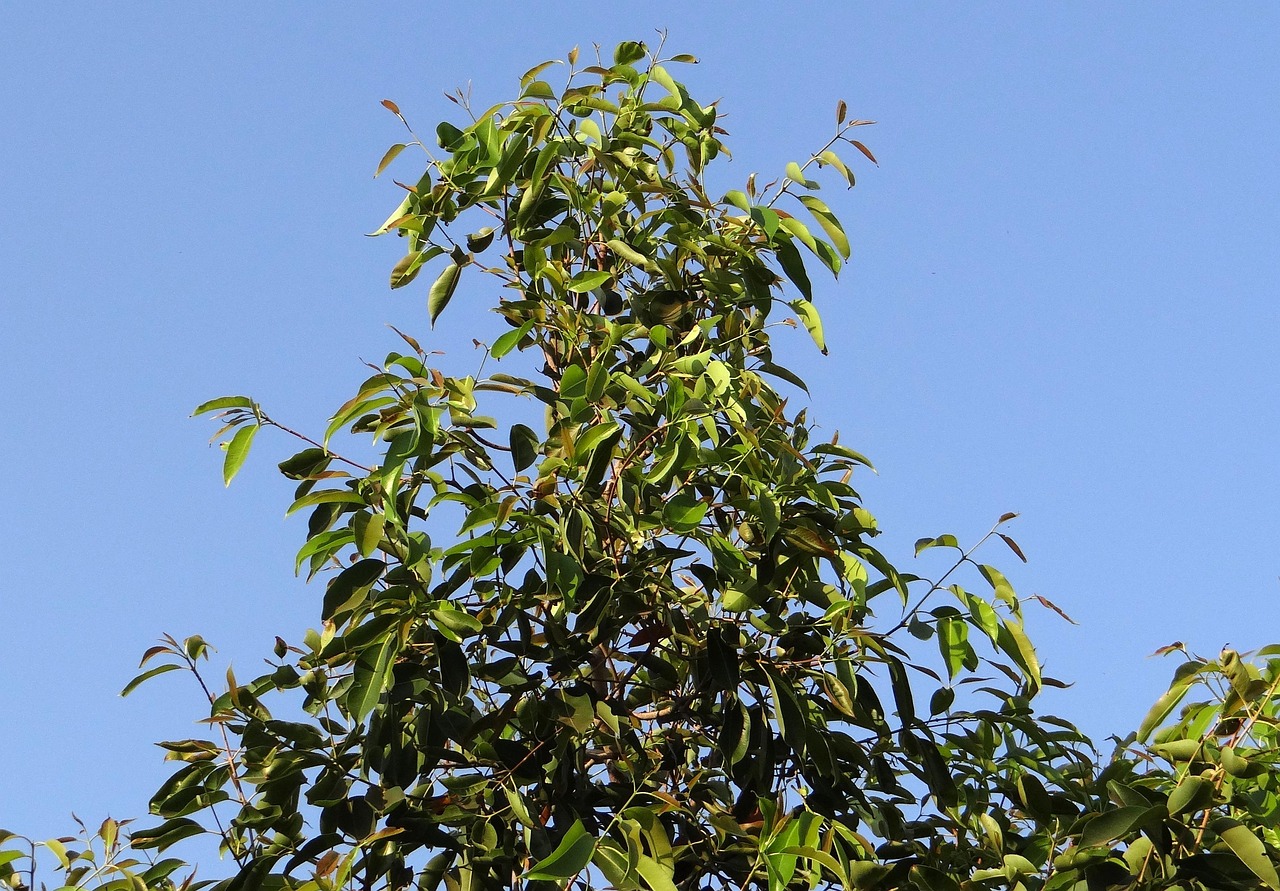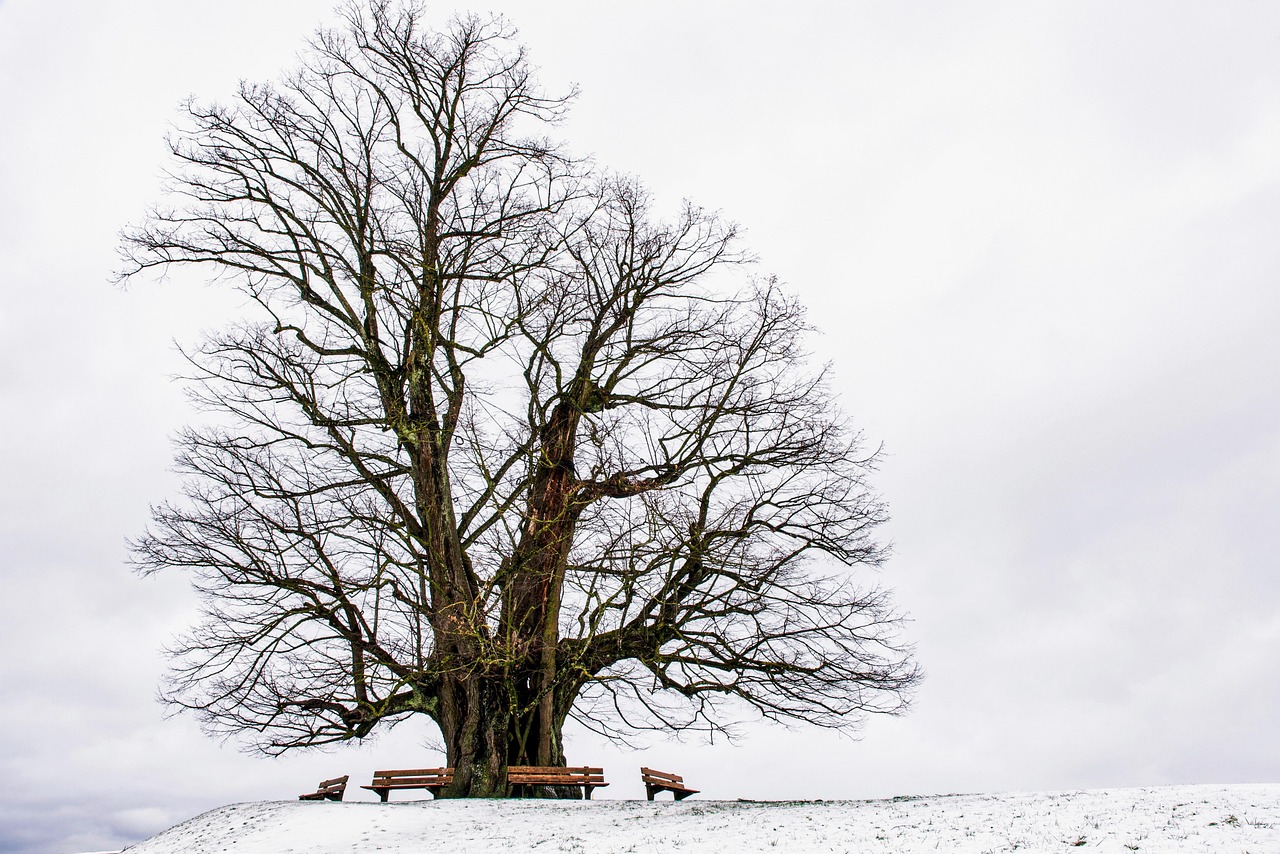The Jamun tree, known scientifically as Syzygium cumini, typically exhibits a moderate to fast growth rate in tropical urban environments, reaching heights of 30 to 40 feet within 10 to 20 years under ideal conditions.
Understanding the Jamun Tree
The Jamun tree is a tropical evergreen species native to the Indian subcontinent. It thrives in various soil types but prefers well-drained loamy soil. This tree is valued not only for its delicious dark purple fruits but also for its shade and ornamental qualities. In urban settings, it can serve as an excellent choice for parks and gardens due to its resilience and aesthetic appeal.

Urban environments present unique challenges and opportunities for tree growth. Factors such as soil composition, available space, water supply, and pollution levels significantly influence the growth rate of trees, including the Jamun. Understanding these influences is crucial for urban planners and gardeners who wish to cultivate this tree successfully.
Growth Characteristics of the Jamun Tree
The growth rate of the Jamun tree can vary based on several environmental factors. Here are some key characteristics that affect its growth:
- Soil Quality: The presence of nutrients and proper drainage in the soil promotes faster growth.
- Water Availability: Adequate watering during dry periods is essential for maintaining health and growth.
- Sunlight: Full sunlight exposure encourages vigorous growth and fruit production.
- Climate Conditions: Warm temperatures typical of tropical regions provide an ideal environment for this tree.
Growth Rate Insights
The growth rate of the Jamun tree can often be categorized based on age and environmental conditions. Below is a table summarizing the average growth rates at different stages of maturation:

| Age (Years) | Height (Feet) | Growth Rate (Feet/Year) |
|---|---|---|
| 1 | 3 – 5 | 3 – 5 |
| 5 | 10 – 15 | 2 – 3 |
| 10 | 20 – 30 | 2 – 4 |
| 20+ | 30 – 40 | 1 – 2 |
The table illustrates that during the first few years, Jamun trees can experience rapid growth. As they mature, their growth rate gradually slows down. This pattern is typical for many tree species and highlights the importance of early care in urban settings.
Challenges in Urban Environments
While Jamun trees can grow well in urban environments, they also face specific challenges that can impact their development:
- Pavement and Infrastructure: Roots may struggle to expand when surrounded by concrete and other structures.
- Pollution: Air pollution can affect overall health and growth rates.
- Limited Space: Trees in urban areas often have limited room for growth, which can restrict their potential height and spread.
- Pests and Diseases: Urban trees may encounter more pests due to a higher concentration of human activity.
Addressing these challenges requires careful planning and management. Urban planners can implement strategies to promote the health of Jamun trees, such as creating green spaces that allow for root expansion and providing adequate irrigation systems.

The Role of Jamun Trees in Urban Ecology
The Jamun tree plays a vital role in urban ecology. It contributes to biodiversity by providing habitat for various birds and insects. Moreover, it helps improve air quality by absorbing carbon dioxide and releasing oxygen. The fruits are not only edible for humans but also attract wildlife, enhancing local ecosystems.
By understanding the growth rate and characteristics of the Jamun tree, urban environments can better integrate this species into community spaces, fostering both natural beauty and ecological benefits.
Factors Influencing Growth Rate in Urban Settings
The growth rate of the Jamun tree in tropical urban environments is influenced by several factors. Understanding these elements can help urban planners and gardeners optimize conditions for healthy tree development. Below are some key factors that play a critical role in the growth of the Jamun tree.

Soil Composition
The type of soil greatly affects the growth rate of Jamun trees. Well-drained, nutrient-rich soil supports faster growth. Poor soil quality can lead to stunted growth and health issues. Key components of ideal soil include:
- Nutrients: Essential nutrients such as nitrogen, phosphorus, and potassium are vital for growth.
- pH Level: The ideal soil pH for Jamun trees ranges from 6.0 to 7.0.
- Organic Matter: Adding organic matter improves soil structure and fertility.
Water Management
Water availability is crucial for the growth of the Jamun tree. Inadequate water supply can stress the tree, leading to reduced growth rates. Effective water management strategies include:
- Irrigation Systems: Implementing drip irrigation can ensure consistent moisture without waterlogging.
- Mulching: Applying mulch around the base of the tree helps retain soil moisture and regulate temperature.
- Rainwater Harvesting: Collecting rainwater can provide an additional water source during dry periods.
Environmental Factors
Environmental conditions in urban areas can also affect the growth rate of Jamun trees. The following factors are noteworthy:
- Temperature: Jamun trees thrive in warm temperatures, ideally between 70°F and 100°F.
- Pollution Levels: High levels of air pollution can hinder growth; trees may require additional care in polluted areas.
- Wind Exposure: Strong winds can damage young trees; providing windbreaks may be necessary.
Planting Techniques for Optimal Growth
Proper planting techniques can significantly influence the initial growth rate of Jamun trees. Here are some best practices to consider:
Selecting the Right Location
The choice of location is vital for the long-term success of the Jamun tree. Ideal locations should have:
- Sunlight: A site that receives full sunlight encourages robust growth.
- Space: Ensure adequate space for roots and branches to expand.
- Accessibility: Consider ease of access for maintenance and watering.
Soil Preparation
Before planting, it’s essential to prepare the soil adequately. Steps include:
- Testing the soil pH and nutrient levels.
- Amending the soil with organic matter to improve fertility.
- Tilling the soil to enhance aeration and drainage.
Planting Techniques
The following steps outline effective planting techniques for Jamun trees:
- Disease-Free Seedlings: Choose healthy, disease-free seedlings from reliable sources.
- Digging Holes: Plant in holes that are twice as wide as the root ball but no deeper than the root system.
- Water Immediately: Water thoroughly after planting to settle the soil around the roots.
Pest Management Strategies
<pManaging pests is essential for ensuring healthy growth of Jamun trees in urban environments. Common pests include aphids, scale insects, and fruit flies. Effective pest management strategies include:
- Cultural Practices: Regularly clean fallen fruits and leaves to reduce pest attraction.
- Natural Predators: Encourage beneficial insects like ladybugs that feed on aphids.
- Pesticides: Use organic pesticides as a last resort, applying them during non-pollinating hours.
By understanding these factors and implementing best practices, urban environments can foster healthy growth rates for Jamun trees, enriching community spaces while promoting ecological sustainability.
Benefits of Cultivating Jamun Trees in Urban Areas
Growing Jamun trees in urban environments offers numerous benefits that can enhance the overall quality of life for residents. These benefits extend beyond aesthetics, contributing to ecological balance and community health. Below are several significant advantages of cultivating Jamun trees in cities.
Environmental Benefits
Jamun trees play a crucial role in urban ecosystems. Their environmental contributions include:
- Air Quality Improvement: Jamun trees absorb carbon dioxide and release oxygen, helping to purify the air.
- Temperature Regulation: The shade provided by Jamun trees can lower ground temperatures, reducing the urban heat island effect.
- Soil Erosion Prevention: Their root systems help stabilize soil and reduce runoff during heavy rains.
Biodiversity Support
Jamun trees support a diverse range of wildlife. They attract various insects, birds, and other animals, which can enhance local biodiversity. Key points include:
- Habitat Creation: The tree provides shelter and food for numerous species, including pollinators like bees.
- Food Source: The fruits of the Jamun tree are edible for both humans and wildlife, promoting healthy ecosystems.
Cultural and Community Significance
The Jamun tree holds cultural importance in many regions, symbolizing strength and endurance. In many communities, these trees are associated with traditional practices and festivals. Some notable aspects include:
- Traditional Uses: The fruit is not only enjoyed fresh but is also used in various recipes, jams, and beverages.
- Cultural Heritage: Planting Jamun trees often signifies community bonding and heritage preservation.
Community Engagement
Involving community members in the planting and maintenance of Jamun trees can foster a sense of ownership and responsibility. This engagement can take various forms:
- Community Planting Events: Organizing events where residents can plant trees together strengthens community ties.
- Educational Programs: Workshops on the benefits and care of Jamun trees can raise awareness about urban forestry.
Challenges of Cultivating Jamun Trees in Urban Environments
Despite their many benefits, growing Jamun trees in urban areas comes with challenges that require attention and resources. Addressing these challenges is essential for successful cultivation.
Space Constraints
Urban environments often have limited space for planting trees. This restriction can lead to competition for resources among plants. Key considerations include:
- Root Space: Limited soil volume can restrict root growth and nutrient uptake.
- Pavement Damage: Roots may lift pavements or sidewalks, causing safety hazards.
Maintenance Requirements
Caring for Jamun trees in urban settings requires ongoing maintenance to ensure healthy growth. Important maintenance tasks include:
- Irrigation Needs: Regular watering is necessary, especially during dry seasons.
- Pest Management: Continuous monitoring for pests and diseases is vital for tree health.
- Pruning: Proper pruning techniques must be applied to maintain shape and promote airflow through the canopy.
Future Prospects for Jamun Tree Cultivation
The future of Jamun tree cultivation in urban environments looks promising. With increasing awareness of the importance of green spaces, there is a growing trend toward urban forestry initiatives. Future prospects include:
Sustainable Practices
Emphasizing sustainable practices can enhance the viability of Jamun trees in cities. Some strategies include:
- Permaculture Design: Integrating Jamun trees within permaculture systems can create sustainable urban landscapes.
- Native Plant Integration: Combining Jamun trees with other native plants can support local wildlife and reduce maintenance needs.
Policy Support
Government policies that support urban greening initiatives can significantly benefit the cultivation of Jamun trees. Potential policy measures include:
- Incentives for Urban Planting: Providing financial incentives for planting trees can encourage community participation.
- Zoning Regulations: Adjusting zoning laws to protect existing trees and promote new plantings can create healthier urban environments.
The integration of Jamun trees into urban planning and community development will continue to provide long-term ecological and social benefits, making cities more livable and sustainable environments.
Community Involvement and Education
Enhancing the growth of Jamun trees in urban environments is not solely the responsibility of urban planners and gardeners. Community involvement plays a crucial role in the success of urban forestry initiatives. Educating residents about the benefits and care of Jamun trees can lead to more active participation in their maintenance and protection.
Workshops and Training Programs
Hosting workshops can empower community members with knowledge and skills necessary for caring for Jamun trees. Some potential topics include:
- Tree Care Basics: Teaching residents how to water, prune, and protect their trees.
- Pest Identification: Helping individuals recognize common pests and diseases affecting Jamun trees.
- Harvesting Techniques: Educating on the best practices for harvesting fruits sustainably without damaging the tree.
Volunteer Initiatives
Creating volunteer programs encourages community engagement in tree planting and maintenance activities. Benefits of such initiatives include:
- Building Relationships: Volunteers can develop connections with neighbors, fostering a sense of community.
- Improving Local Aesthetics: Collaborative efforts can enhance green spaces, making neighborhoods more attractive.
- Environmental Stewardship: Engaging in tree care instills a sense of responsibility for local ecosystems.
The Economic Impact of Urban Jamun Trees
The economic benefits of cultivating Jamun trees in urban environments are significant. Beyond their ecological advantages, they can contribute to local economies in various ways:
Increased Property Values
Green spaces and trees have been shown to enhance property values. The presence of Jamun trees in neighborhoods can make areas more desirable, leading to:
- Higher Real Estate Prices: Properties located near well-maintained green spaces often sell for more.
- Attracting Businesses: Attractive neighborhoods can draw businesses that contribute to local economies.
Tourism Potential
Cultivating Jamun trees can also increase tourism in urban areas. Visitors may be drawn to attractions featuring these unique trees, particularly when they are in fruit. Potential benefits include:
- Cultural Festivals: Hosting events centered around Jamun harvesting can attract tourists and promote local culture.
- Educational Tourism: Schools and organizations might take field trips to learn about urban forestry and sustainable practices.
Final Thoughts
The growth rate and successful cultivation of Jamun trees in tropical urban environments are influenced by various factors, including soil quality, water availability, and community involvement. With their numerous environmental, cultural, and economic benefits, Jamun trees represent an invaluable asset to urban landscapes.
As cities continue to evolve, integrating green spaces like those featuring Jamun trees will be essential for promoting biodiversity, improving air quality, and enhancing the overall livability of urban areas. Community engagement through education, volunteer programs, and sustainable practices will further support the growth and health of these trees.
In conclusion, recognizing the significance of Jamun trees within urban planning frameworks can lead to healthier ecosystems and vibrant communities. By investing time and resources into the cultivation of these trees, cities can create green spaces that benefit not only the environment but also residents’ quality of life.
